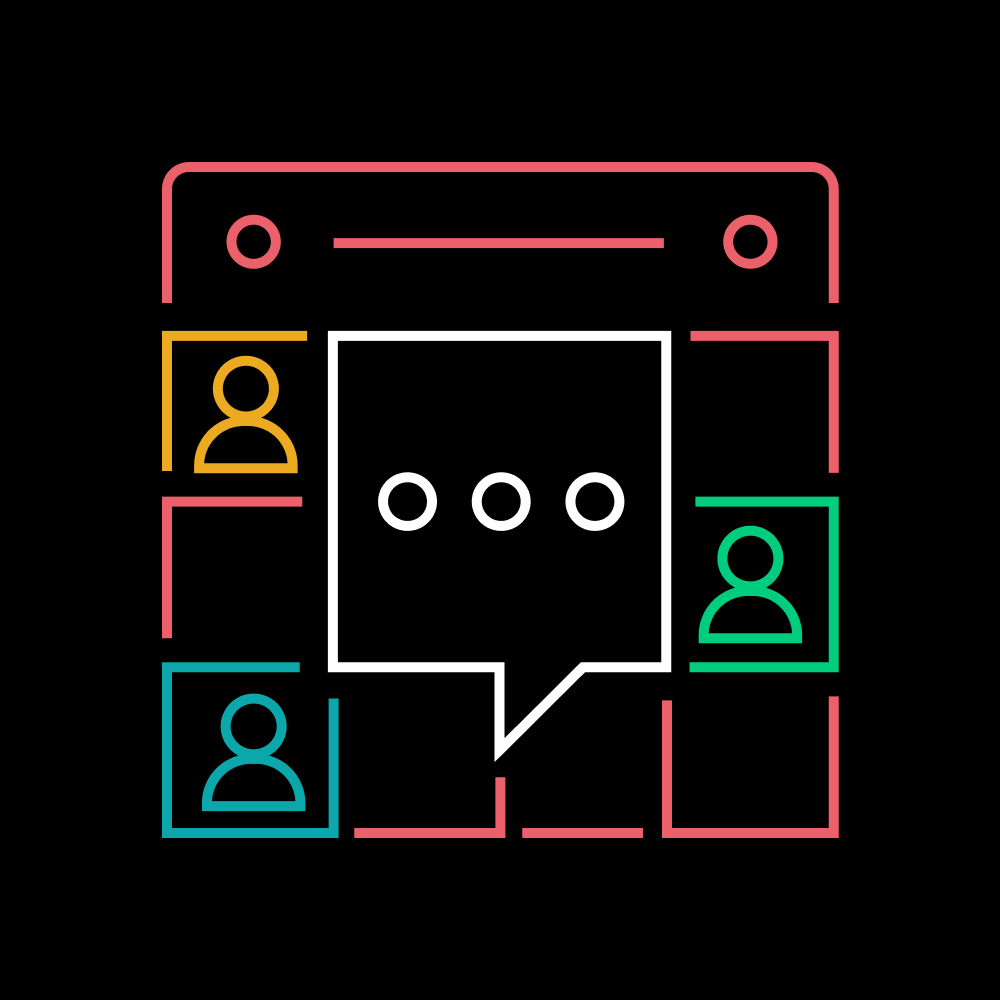
Here’s how leaders can revive, rethink, and redesign work to thrive in the ‘new normal’
Future Forum co-founder Christina Janzer on why you can’t devise your future of work strategies by looking to the past
Posted November 2, 2022 by Christina Janzer
Packed with insights for making work more flexible, inclusive, and connected, Future Forum’s inaugural How the Future Works Summit took place on October 20 in New York City.
Christina Janzer, the Senior Vice President of Research and Analytics at Slack and a Future Forum co-founder, energized the summit’s virtual and in-person summit attendees with a keynote that addressed the opportunities—and challenges—the biggest work paradigm shift has placed before executives. Read her keynote or watch it below.
When the pandemic hit, millions of people were forced to work in ways we never had before.
And… we did it! You did it! You led through a global pandemic. You adapted, you tried new things on the fly, and I know you learned a lot. So did I.
Now the world is beginning to open up again. And it would be easy to take that as a signal that we can return to normal. But I don’t want to ignore all the learnings, all the improvements made over the past two years.
And at the same time, we’ve got a tough economy. We’ve got a looming climate crisis. We’ve got social and geopolitical unrest. Nothing feels back to normal, does it?
And it won’t. Maybe it won’t ever again. Our pre-pandemic expectations and assumptions about work don’t hold true in this era of constant change.
You get that. You know that in an uncertain economy—in an unpredictable era—you can’t “return” to old leadership norms and styles.
You can’t devise your future of work strategies by looking to the past
You know there’s no “returning,” but just because you know that doesn’t mean it’s easy to change. This kind of monumental change is hard. And we know you’re feeling that. How do we know? We’ve measured it.
You’re probably familiar with our Future Forum Pulse—our quarterly survey of more than ten thousand desk workers around the globe. Many of you have used our Pulse data to guide conversations at your own organizations.
One of the things that makes our Pulse survey so great is that it allows us to see change over time. We can trace the ups and downs in employee sentiment and experience quarter over quarter, all the way back to the early days of the pandemic. It also allows us to make comparisons between populations so we can see the differences between different generations, races, genders, countries, roles, job levels, and more.
And we have some brand new data that we’re excited to share. What we’re seeing in the data is that leaders are feeling the pressure.

Scores for overall satisfaction at work have dropped 15% over the last year among executives.
We’re reporting 40% more work-related stress and anxiety and 20% worse work-life balance, year over year.
As leaders, we’re supposed to have all the answers. But no one has all the answers right now. In fact, it’s impossible to have all the answers.
It’s easy to fall into the trap of wanting to have it all figured out in the next few months, but that’s unrealistic. This is a period of ongoing change and experimentation, and we’re still at the beginning of the journey. Rather than wait for the dust to settle, let’s embrace the fact that discontinuity will be the new normal.
And since we can’t return to the way things used to be, what can we do?
Revive, rethink, redesign work
You can revive what you loved about your organizational culture. Whatever it was that got you excited about your work, your team, and your organization. The purpose behind your work, the deep relationships you built with your colleagues. The jolt of energy you would feel when solving a tough challenge together. Carry that good stuff forward.
But let’s face it. There are some things we need to rethink about the old way. Office life in the pre-pandemic days might have served the needs of some, but it wasn’t great for everyone.
It wasn’t great for the employee of color who had to contend with constant microaggressions and code-switching to fit the expectations of the office monoculture, day in and day out, Monday through Friday, 9 to 5.
It wasn’t great for the introverts who struggled to get a word in during meetings in packed conference rooms or who didn’t feel comfortable going to happy hour after work to bond with their teams.
It wasn’t great for working parents, And I’ll use myself as an example. I care deeply about my work—I’m so passionate about making work better.
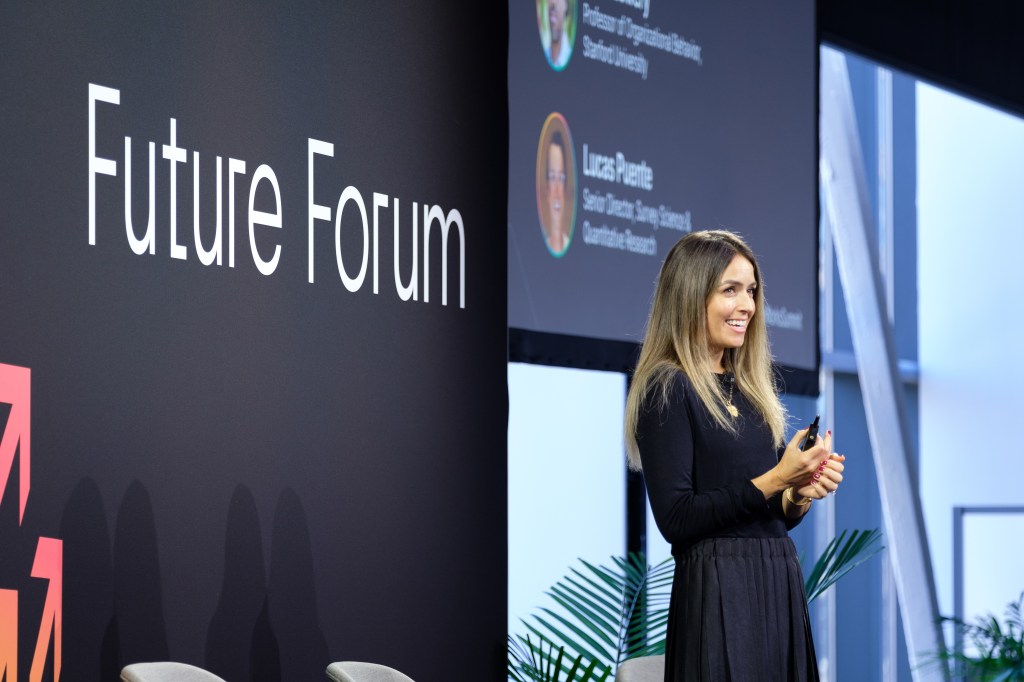
I also care deeply about my family—I have 3 young children. And pre-pandemic, I had to make tough choices many of us have to make. I used to start my commute early in the morning before my kids even woke up. Not seeing them until after work was just part of my day. It was normal.
Except it wasn’t. I didn’t even realize how much I was missing until I was able to experience another way during the past couple of years. Working more flexibly has allowed me to not waste my time on an unnecessary commute, getting back 15 hours every week and giving me time to be there for more important moments.
So what’s the result? I’m more connected to my family and my community, and my work is better for it. And while I felt like a dedicated employee before, I didn’t know how long I could last. Now, I’m not going to pretend I have perfect balance, but it’s much better, and staying in the workforce no longer feels like an impossible feat.
READ: The future of work glossary – A compendium of key terms to inform the workplace of tomorrow
This is my story, and we’ve got plenty of evidence that this is a broader issue.
The data shows us that the rise of flexible work has been an absolute game changer for making workplaces more inclusive.
Everyone wants flexibility, but it’s in the highest demand among women, working moms, and people of color.
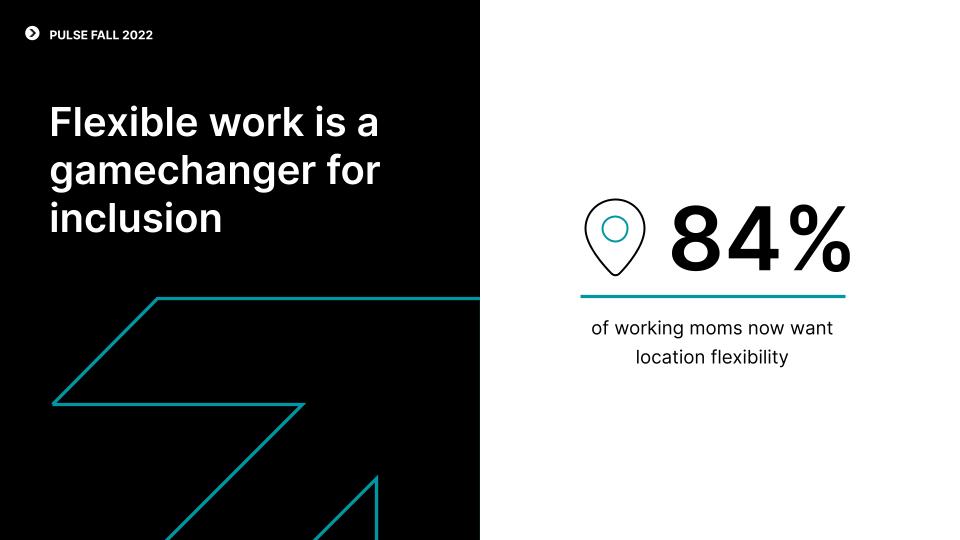
Now let’s talk about what we need to redesign.
Working on a distributed team that is scattered across locations and time zones and untethered from the old 9-to-5 schedules requires redesigning how we work together.
We need to shift from the old top-down, command-and-control method to leadership based on trust and transparency.
Trust and transparency: easy to say, hard to do
This shift may be the biggest change of all.
Because “trust” and “transparency” are easy to say but are really, really hard to do.
I’m going to guess that no matter how transparent you think your organization may be, it’s probably not enough.
I’m guessing that because of data like this: 60% of executives are not involving their employees in their future-of-work planning.
You might wonder what this has to do with transparency—let me take a second to define what I mean. Transparency isn’t just sharing the decision with employees, it also means listening to employees, engaging them in the conversation, and ultimately making decisions that account for their experience.
READ: 7 steps for redesigning work – What companies need to do to make the switch to a digital-first mindset
This is important because the executive experience is different from the employee experience. In fact, we’ve seen in the data that there’s a pretty big disconnect between executives and employees on a wide range of issues.
So if you’re not being transparent—if you’re not directly engaging employees in the conversation—you’re not going to make decisions that benefit them.
And employees who say their leadership isn’t transparent are three times more likely to hop jobs in the coming year.
We talked about transparency, so now let’s talk about trust. Because if you don’t trust your employees, it’ll be impossible to enable a more flexible way of working.
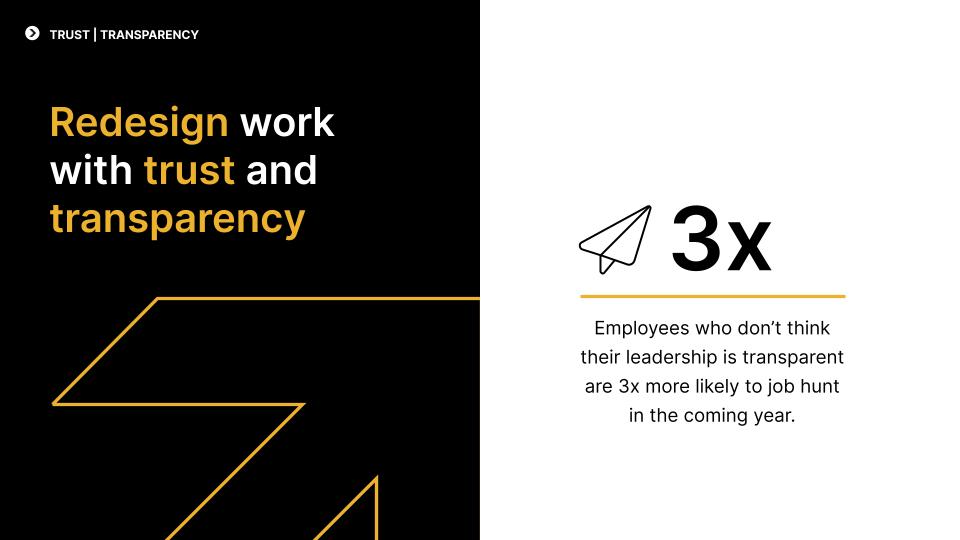
What the data shows about productivity, connection, and culture
And I know this is hard. When we talk to executives, many of you tell us you’re worried about productivity, connection, and culture.
And you wonder how you’re going to be able to keep a pulse on your employees—to see if they’re working, to stay connected to them, and to maintain culture. How are you going to do that if you can’t see them?
In fact, when we survey, we see executives ranking “productivity decline” as one of the top concerns when it comes to flexible work.
But the data we’ve uncovered through our Future Forum Pulse survey may put your minds at ease.
Workers with full schedule flexibility report 29% higher productivity than workers with no ability to shift their schedule and 53% greater ability to focus. And it makes sense! If your days aren’t turned into Swiss cheese because of meetings, and you have more freedom to work when it’s best for you, you’ll be able to focus more, and you’ll be much more productive because of it.
READ: Fall 2022 Future Forum Pulse – Executives feel the strain of leading in the ‘new normal’
Now another common worry we hear from executives is, “How can we connect and build relationships if we’re not in the office?” The conventional wisdom would be that the more you’re in the office, the more connected you feel.
But what does the data show?
The percentage of fully in-person employees who feel very connected to their company values is 29% and their manager is 35%. Now let’s compare this with remote and hybrid employees.
Surprisingly remote and hybrid employees are more likely to feel connected to their direct manager (44%) and their company’s values (34%). And remote and hybrid workers are equally or more likely to feel connected to their immediate teams than their fully in-office counterparts.
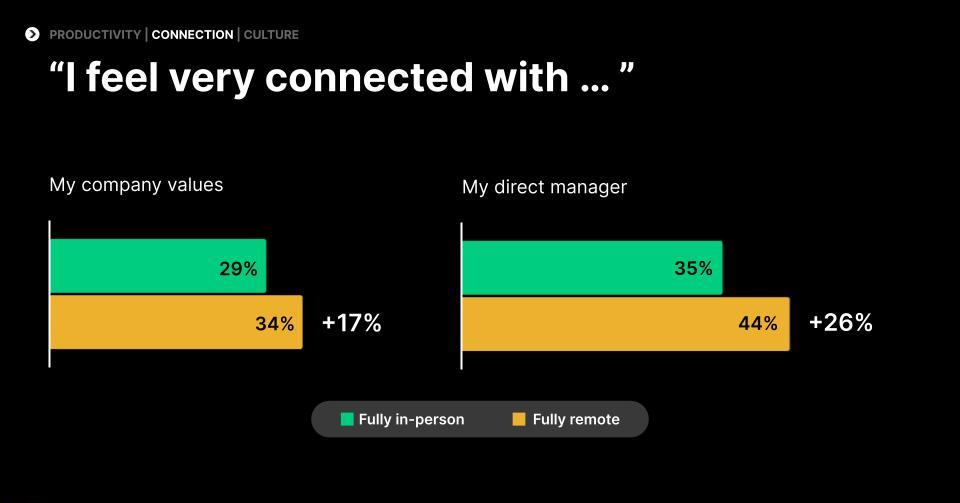
This finding may seem counterintuitive, but think about this from the perspective of an employee—if your company offers flexibility, that shows you your manager knows you will do your work without extensive oversight. And that only helps you feel more connected and like you belong. Your boss is telling you that they trust you.
For those of you who are worried about losing your company culture, we asked workers about that directly, and here’s what they say.
Remote and hybrid workers with flexibility overwhelmingly rank flexible work policies as the number one driver for improving their company culture. Not drinks. Not free food. Flexible work itself drives company culture.
So why aren’t executives experiencing this?
One of the reasons that we’re seeing in the data is there’s a divide between executives and the rest of their teams on using digital tools. Leaders will say, “I know my team is on Slack, but I am too busy to be in there every day. If you need me, email me.”
This is a real problem because if we’re not interacting on the digital platforms where our people are, it doesn’t matter where you’re sitting—it’s almost like you’re not at the office at all. Your digital collaboration space is your new headquarters, and if you’re resisting or avoiding participating there, you’re not where the work is happening. Or where the culture and connection are strengthening.
The data is telling us that flexible teams are more connected. They’re more productive. They score highest for company culture and highest for employee experience and sentiment.
Based on the data, it looks like flexibility is the key that unlocks performance and organizational success. We should all just grant our teams more flexibility and call it a day, right?
Except we know it’s not that simple. Truly embracing flexibility and getting the most out of this new way of working requires a philosophical and cultural shift. You can’t just say you’re flexible and expect it to work.
READ: Tips and tools – How to prepare your organization to experiment with flexible work
We’re now at the point where the best long-term plan for both leaders and employees is to do a total redesign.
We have an opportunity to shift from C-suite–centric to people-centric. We can make work fit better for all people, rather than a select few.
It really comes back to trust and transparency. And moving away from the traditional top-down, command-and-control style of leadership will be a cultural shift for many organizations.
This is the biggest leadership challenge of our lifetimes but investing in this change is a long game. Those of us who embrace this shift will win in the short term, but we’ll also pave the way for the next generation of leaders and business winners.
